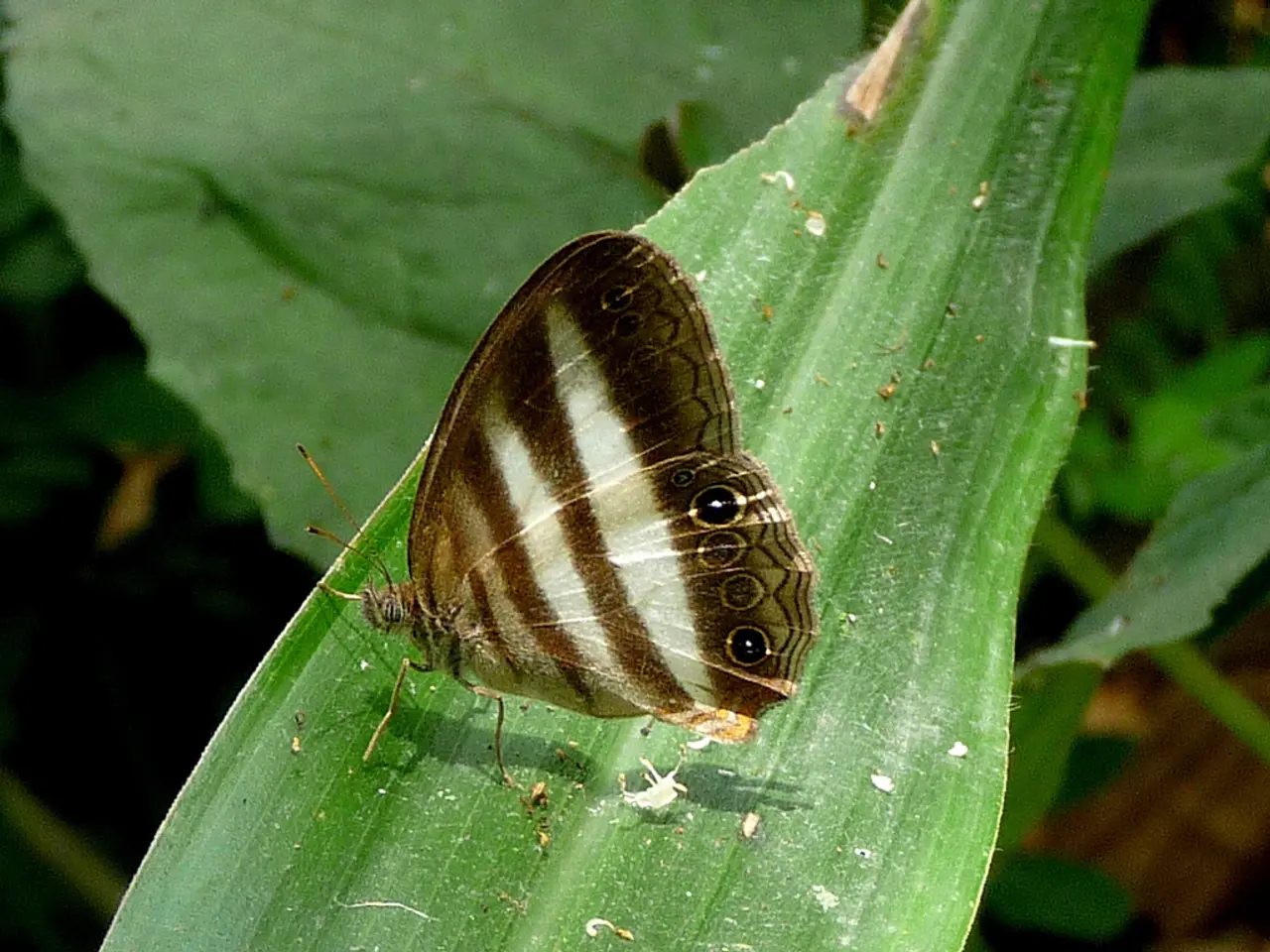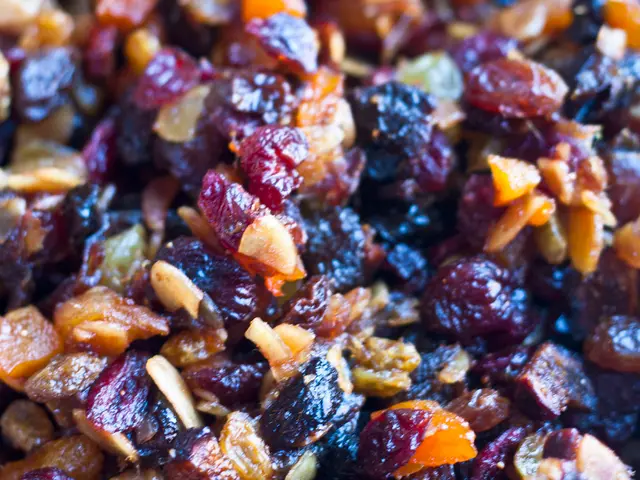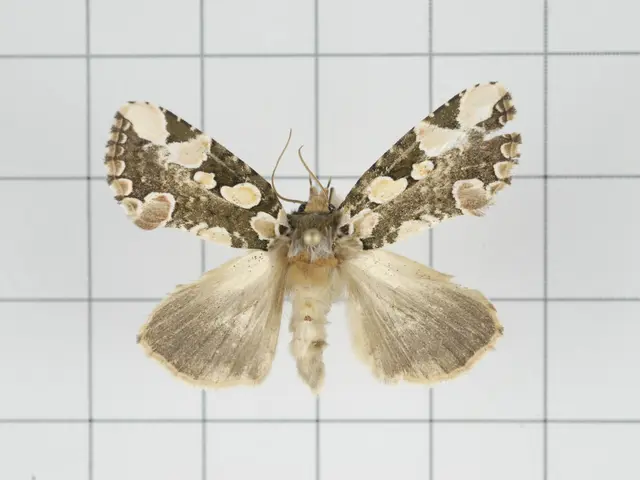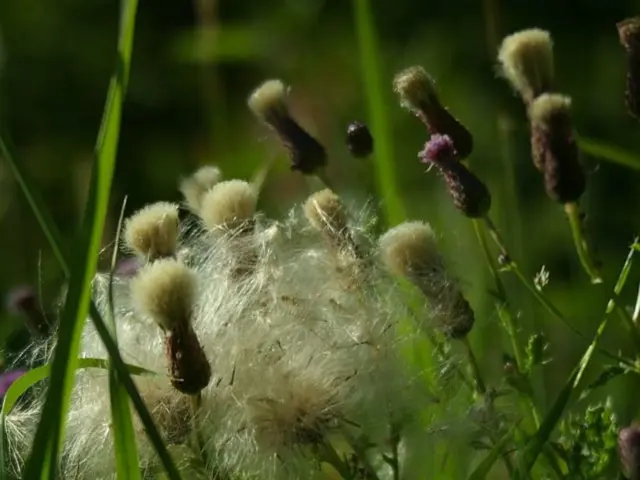Cabbage White Butterfly Invades North America, Threatening Brassica Crops
The cabbage white butterfly, Pieris rapae, has become a significant pest in North America, causing concern among gardeners and farmers alike. Originally from Europe, this invasive species has spread across the United States and Canada, posing threats to brassica crops.
The cabbage white butterfly is easily recognisable by its off-white wings, adorned with one or two black spots depending on its sex, and a muted greenish or yellowish underside. Despite its delicate appearance, it's a serious pest due to its larvae's competitive feeding habits and contamination of foliage.
Adult cabbage whites can be seen fluttering low on sunny days, seeking leaves to lay their eggs. Females lay hundreds of eggs on brassica plants like cabbage, cauliflower, bok choy, and kale. These eggs hatch into larvae, known as imported cabbageworms, which chew holes in host plant leaves, often reducing crops to mere skeletons.
To control these pests, gardeners and farmers can employ several methods. Biological sprays like Bt (Bacillus thuringiensis) can target larvae, and chemical pesticides should be avoided. Other strategies include handpicking caterpillars and eggs, using row covers, crop rotation, and introducing natural predators to maintain a balanced ecosystem.
While cabbage whites play a role in the ecosystem as food for birds and beneficial insects, and spark curiosity about insect life cycles, their larvae cause significant damage to crops. As they continue to spread in North America, it's crucial to implement control methods to protect brassica crops and maintain a healthy balance in our gardens and farms.
Read also:
- The Monroe Institute: Pioneering Consciousness Exploration with Hemi-Sync
- Bishop's Tour of Rome's Refugee Center Acts as Blueprint for Episcopal Institutions in Europe and the US
- Symptomatic of the flu? A fresh, home-based COVID-19 and influenza test offers assistance
- Around a third of general practitioners (GPs) have not previously worked for the National Health Service (NHS) or have left their positions.








